Niti, Malari – Where People Are Gods
This is part of my continuing travel series. Read the earlier chapters here:
- To The Himalayas - Unguided Solo Travel
The Long Wait for a Permit
After three days of waiting in the Joshimath SDM office, I finally secured my Inner Line Permit to visit the border village of Niti.
Niti had been calling my name since 2011. Back then, we’d planned the Kamet Base Camp trek but were denied permission. Niti is the last village on the Tibet border and once lay along an ancient trade route between India and Tibet. This route was part of the famed Kailash Mansarovar Yatra, though that pilgrimage is now closed.
The Rongpa Tribes of Uttarakhand
The Rongpa people, also known as Bhotias, are high-altitude tribes deeply rooted in these mountains. Yet, they’re fading. Government reservations and benefits have ironically hastened the disappearance of their culture. Many Rongpa now hold government jobs in cities like Dehradun and Delhi. Education pulled them away from the mountains—and from the traditions of their ancestors.
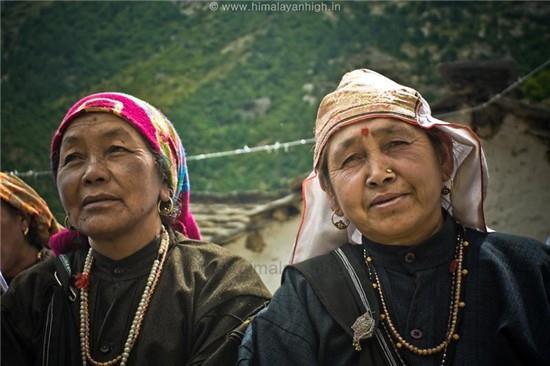 Women of Ghamsali in traditional Rongpa attire.
Women of Ghamsali in traditional Rongpa attire.
The Drive to Niti
I boarded the only shared jeep leaving Joshimath for Niti around 11 AM. Thankfully, this part of Uttarakhand hadn’t been ravaged by the floods. I’d traveled this road before—but only as far as Jumma for my Baghini Glacier trek. This time, I was determined to go all the way to the end of the road.
My jeep companions were eleven locals from Niti, Bampa, and Ghamsali. They spoke in rapid Rongpa—a language I couldn’t follow. I caught snippets in Hindi now and then. Mostly, the men debated politics while the women discussed village news and family matters.
My window seat offered sweeping views of the mountains and villages drifting past. The road twisted and climbed, sometimes thrilling, sometimes terrifying. My heart soared with joy. I was finally heading to Niti.
Near the journey’s end, an older man seated behind me struck up a conversation. Perhaps he thought I was an Army officer, but when I didn’t get down at Malari, he became curious. It turned out he was an ex-SSB man who’d been posted in my hometown—Jaigaon on the Bhutan border—for three years. Instant connection. The rest of the ride felt warmer and friendlier.
After a quick permit check in Ghamsali, we continued on an even more treacherous road. Passing through the lovely village of Bampa, we finally rolled into Niti.
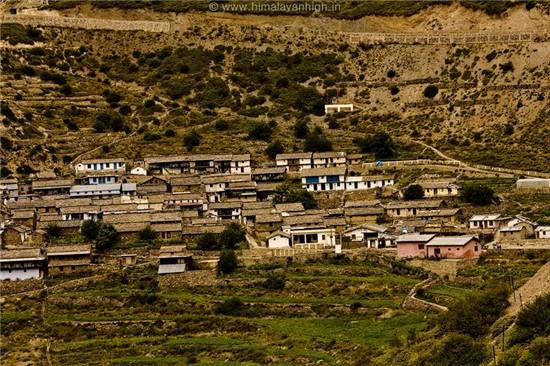 The remote village of Niti.
The remote village of Niti.
The Rongpa Hospitality
I was welcomed in Niti in ways I could never have dreamed.
Beyond warm smiles and greetings of “Namaste,” the villagers arranged my stay in a guest house meant for visitors and festival guests. There were no hotels in Niti, though I hadn’t known that. Food wasn’t a problem—I was pre-invited into villagers’ homes. They poured me precious Kacchi, the local liquor, and served hearty meals alongside stories and laughter. Their kindness toward a stranger like me was overwhelming.
That night, I was invited to witness a ritual after dinner. And for the morning, a hike was planned to a nearby sacred cave. What more could I possibly wish for?
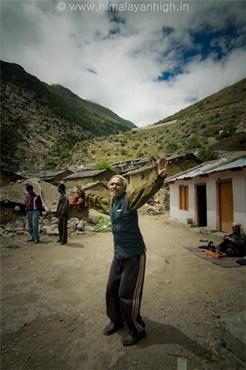 Locals enjoying a moment in Niti village.
Locals enjoying a moment in Niti village.
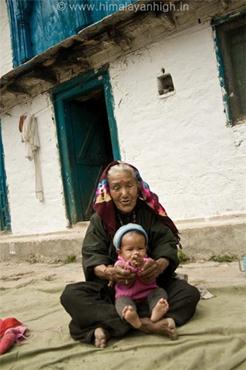 A grandmother and child sharing smiles in Niti.
A grandmother and child sharing smiles in Niti.
The Village Bond
One thing struck me deeply: in Niti, everyone seemed related. Brother, sister, uncle, aunt, nephew—by blood or by marriage. Weddings between neighboring villages weave them into a vast family web. Rituals strengthen these bonds, making village life vibrant and close-knit.
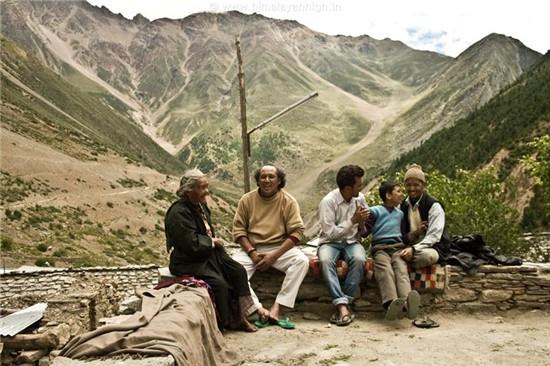 Village discussions that tie the community together.
Village discussions that tie the community together.
The Bhagdwal Devta Dance
I was blessed to witness Bhagdwal Devta—a ritual unlike anything I’d ever seen. It was the time of year when the village comes alive, as people return home to preserve their ancient customs.
Bhagdwal Devta carries a deep mythical story. During the ritual, gods and goddesses possess the bodies of villagers. It’s haunting and powerful.
The Ritual Unfolds
It began with rhythmic drumbeats, summoning the villagers to gather at a small temple after lunch. Logs were arranged, and a small fire burned. Men draped scarves over their shoulders, tied turbans on their heads, and began circling the fire while singing a story-song. Wheat grains flew into the flames, scattered on the ground, and were tossed among the spectators.
Gradually, the dancers began to shiver—a sign the gods were entering their bodies. One by one, they took on different divine characters. A woman soon joined, whirling into the dance until the goddess possessed her. The performance grew intense, filled with cries of pain and emotion. The dancers embraced each other, weeping. Swords and knives were drawn and brandished in hypnotic rhythm.
The ceremony ended with prayers and the distribution of sacred Prasad.
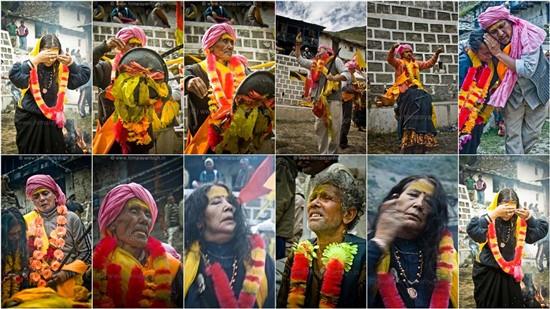 The mesmerizing Bhagdwal Devta Dance.
The mesmerizing Bhagdwal Devta Dance.
The Tale of Bhagdwal Devta
The Bhagdwal Devta story revolves around a proud king of Tehri—Jitu Bhagdwal—an accomplished flute player who enchanted angels with his music. But he betrayed them during their visit to his kingdom. Enraged, the angels slaughtered his entire dynasty, sparing only his sister, her son, and a brother who were away visiting.
When the survivors returned and found the kingdom in ruins, they pleaded with the angels to kill them too. But the angels refused to take innocent lives. Instead, they promised that though they couldn’t restore the dead to life, they could awaken their souls so they could reunite in spirit.
The Bhagdwal Devta songs narrate this tale. During the dance, the souls of those slain enter the dancers’ bodies. It’s a profound expression of pain, separation, and eventual reunion.
The Hike to the Shivling Cave
The previous evening, my new friends proposed a hike to a sacred cave about 1.5 kilometers from the village. At 7 AM, three of us set off, carrying offerings for Shiva, who is said to dwell in such hidden places. Along the way, my companions shared secrets of local plants and wild herbs that replace onions and cumin in their mountain kitchens.
We bathed in the fierce white waters of the Doodh Ganga river—its name means “Milk River” because of its color. The climb to the cave was short but slippery. We offered our prayers and returned, filled with a quiet reverence.
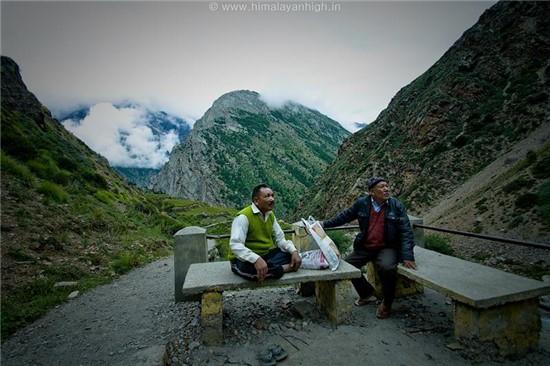 Near the sacred Shivling cave outside Niti village.
Near the sacred Shivling cave outside Niti village.
Another Night of Rituals
By afternoon, it was time for the ritual again. Women from the nearby village of Ghamsali arrived, greeted warmly with smiles and local liquor. This time, I understood the entire act. And when the dancers hugged and cried, I felt a lump in my own throat.
These people live with two layers of relationships: one ordinary and human, the other divine, shaped by rituals and gods.
After lunch, we shared casual conversations as if I belonged there. That evening, I trekked up to the border post and returned, savoring my last night in Niti.
Malari
The next morning, I caught the only jeep back to Joshimath, getting down midway at Malari—a larger village of about 300 people. Here, another Devta ritual awaited: the Pandav Devta Dance, echoing familiar tales from the Mahabharata.
I spent the day roaming Malari alone, my camera in hand and my soul as my best companion. These are moments I still carry within me.
In the evening, a local invited me to his home for dinner. Over delicious food and glasses of Kacchi, conversations flowed, drifting across every topic under the sun. A warm meal and deep sleep closed my day in Malari.
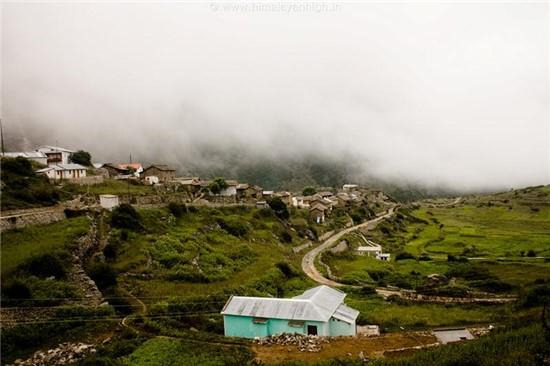 Bampa village, on the way to Niti.
Bampa village, on the way to Niti.
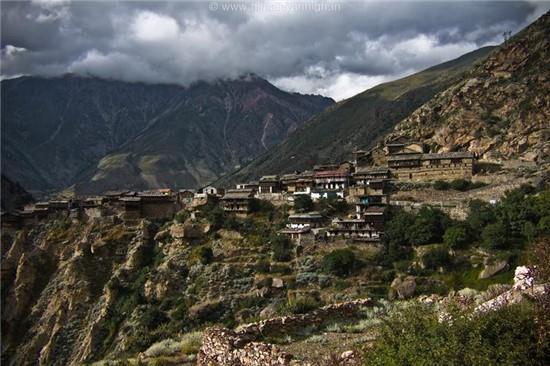 Malari village, high in the Himalayas.
Malari village, high in the Himalayas.
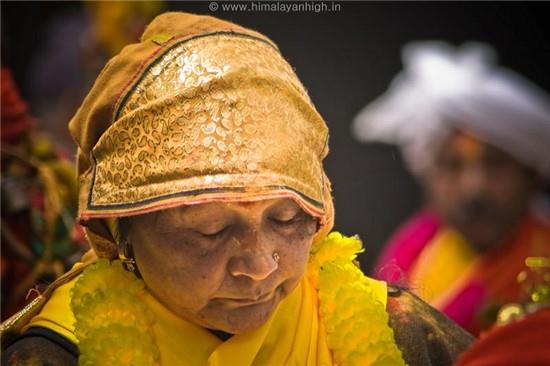 The Pandav Devta Dance – Draupadi portrayed in divine fervor.
The Pandav Devta Dance – Draupadi portrayed in divine fervor.
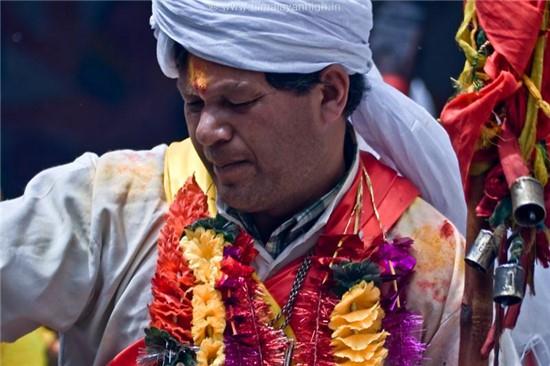 The Pandav Devta Dance – Arjun enters the sacred performance.
The Pandav Devta Dance – Arjun enters the sacred performance.
Dronagiri
I’d been to Dronagiri once before during my Baghini Glacier trek. This time, I climbed straight up from Jumma. The post-monsoon landscape was transformed—lush green, dense bushes, vibrant life everywhere.
Unexpectedly, I stayed with Nepali laborers in the village. It gave me profound insight into both their lives and my own. Their simplicity, resilience, and perspective on life were humbling lessons.
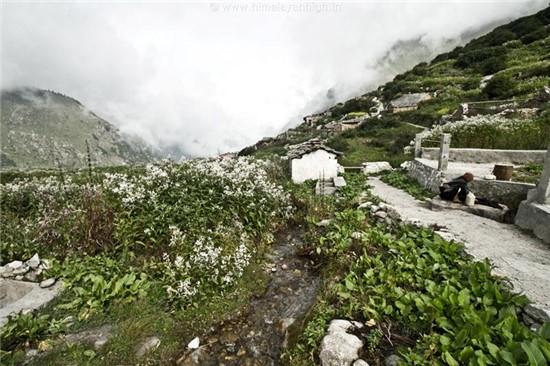 Dronagiri village in its monsoon green glory.
Dronagiri village in its monsoon green glory.
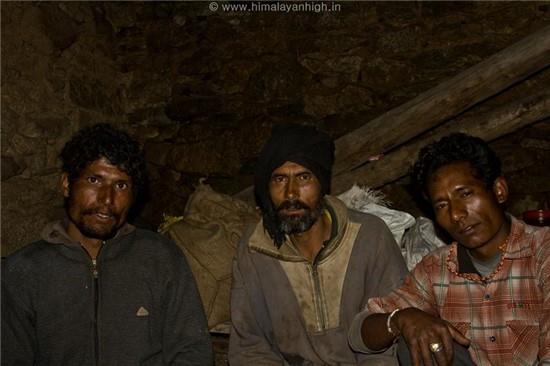 Nepali workers who welcomed me as family.
Nepali workers who welcomed me as family.
My time in these villages was like living a beautiful dream. I felt less a traveler and more a local. So warm, so giving…
Indeed, here, people are gods.